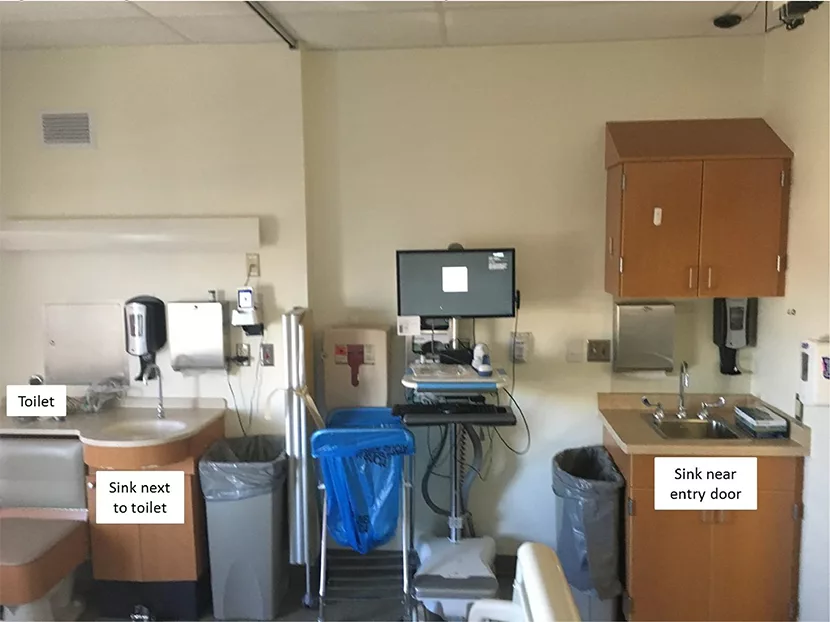Sinks situated next to patient toilets in hospital rooms may be reservoirs for Klebsiella pneumoniae carbapenemase, increasing the risk of dangerous germ transmission, according to new research published in the American Journal of Infection Control, the journal of the Association for Professionals in Infection Control and Epidemiology.
"This study, if validated, could have major implications for infection control," write study authors, Blake Buchan, PhD, and Silvia Munoz-Price, MD, PhD. "If sinks next to toilets are indeed a reservoir for KPC, additional interventions, such as modified hand hygiene practices and sink disinfection protocols, may be needed to stem the risk of transmission among healthcare providers and patients alike."
The study found a high prevalence of KPC positivity in sink drains located next to toilets. Of the samples tested, 87 percent of patient sinks next to toilets tested positive for KPC in stark comparison to the 21.7 percent of sink drains located closer to the entry door of the room.
The study suggested that communal pipes between toilets and sinks could be responsible for the contamination of sink drains. The contamination also could be occurring via droplets during flushing. A third possibility is that routine hand washing by patients and health care workers could introduce bacteria.
The study was conducted in the medical intensive care unit of a 600-bed Wisconsin hospital, where rooms include two sinks and a toilet, which are surface cleaned daily with separate cloths to avoid cross-contamination.
In four out of five sinks that tested positive near the entry of the room, sinks near the toilets also tested positive suggesting a potential source for cross-contamination within the same room. The ICU did not have any documented interactions with KPC-producing organisms within the past year.
Klebsiella is a type of bacteria that can cause a number of healthcare associated infections, such as pneumonia, bloodstream infections, wound infections, or surgical site infections. Increasingly, Klebsiella bacteria have developed antimicrobial resistance, most recently to the class of antibiotics known as carbapenems.




